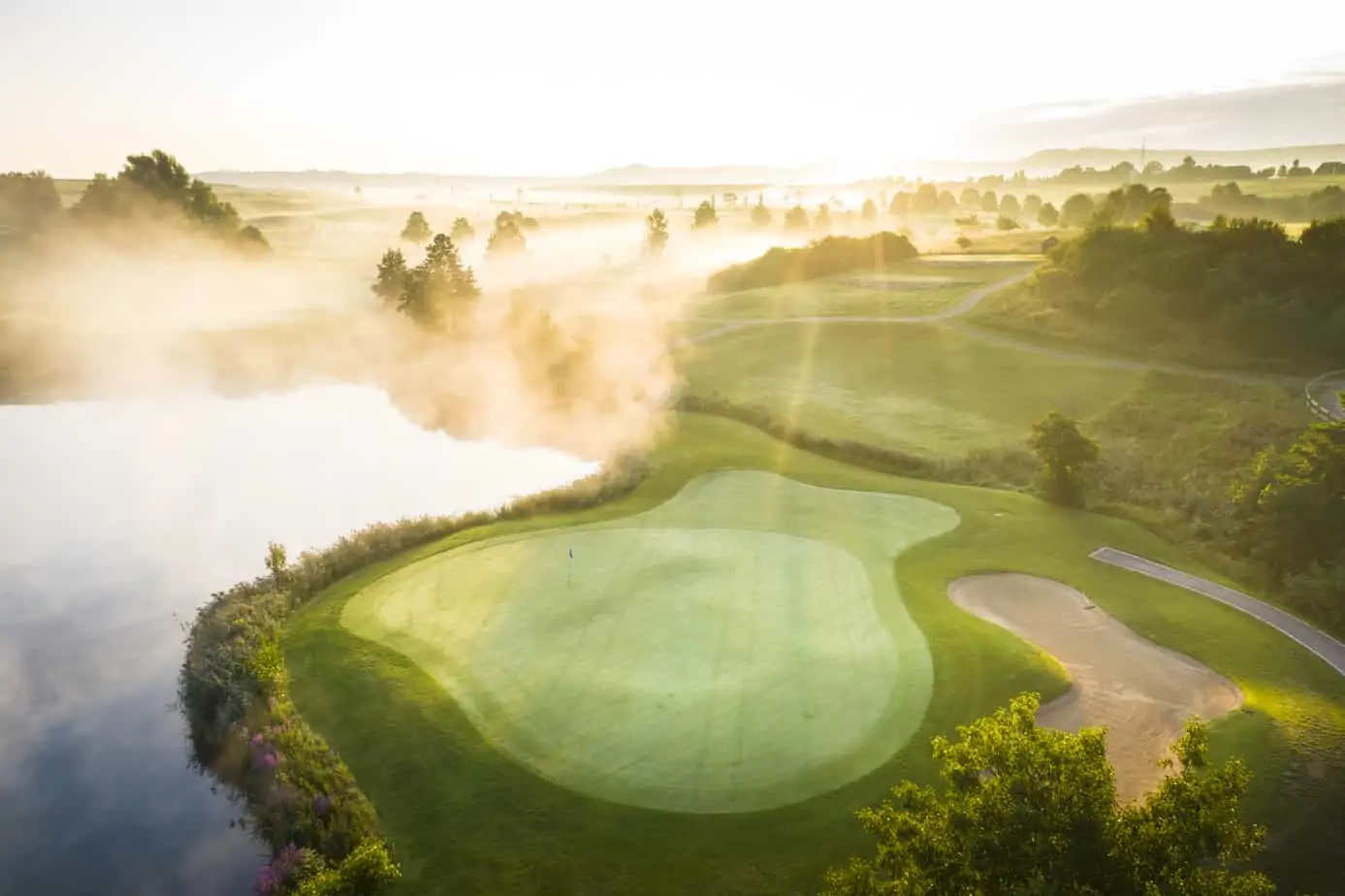The Öschberghof: Sustainability as a guideline
“The fact is, people are becoming more and more sensitive.” Heiko Hildebrandt, head greenkeeper at Öschberghof golf course on Lake Constance in Germany, knows the golf business in the top segment. On the one hand, the guest expects top quality, on the other hand, the aspect of sustainability plays an important role, especially in a resort located in a rural area.
The resort’s 45-hole course, a participant in the Habitat Golf Course project, covers a total of 270 hectares near Donaueschingen and belongs to the Baden-Württemberg Golf Association. Two 18-hole and one nine-hole course can be found here. It is one of the largest golf courses in the German-speaking area. The topic of sustainability runs through from the hotel to the golf courses to the clubhouse kitchen. Regional suppliers dominate in the gastro area, fossil energy is not an issue throughout the facility. Instead, you rely on your own energy generation, which you then use yourself in the case of the golf courses. The Öschberghof is one of those facilities that have already invested in hybrid and electric mowers on the facility.
But there are two main areas where you can learn here: Firstly, in the area of human resources and, secondly, in the area of water. The often difficult situation of seasonal workers in greenkeeping, who are difficult to find and just as difficult to keep, was solved by Hildebrandt in cooperation with the hotel business. “We thought about accommodating the seasonal workers in the hotel and we managed to do it well. They now work there from December to the end of March, so that the greenkeeping employees have permanent contracts with us.” This security has clearly made the greenkeeper job much more attractive.
Self-sufficient when it comes to water
The golf resort also sets trends in the area of water management. The combination of sophisticated collection technology, reservoirs, new grass, water-saving management and good communication of the topic to the golfer means that you are also in the upper segment in a Germany-wide comparison.
On the new 18-hole East Course and 9-hole West Course, all of the surface water is collected and distributed via drainage pipes to a total of seven interconnected reservoirs. The storage capacity is 25,000 m³, which is usually sufficient. In addition, the fairway area on the existing golf course was reduced by a good 15 percent, so that the areas no longer have to be maintained as intensively and no longer have to be watered.
“When it comes to water supply, we are self-sufficient,” sums up Hildebrandt, who can also rely on a two-row fairway irrigation system and a state-of-the-art sprinkler concept on the new courses, which allows individual control of the individual areas of the facility. A total of around 2000 new sprinklers have been installed on the system. However, their efficiency is really used above all by the fact that one person in the greenkeeping team is solely responsible for the fine-tuning of the sprinkling. On the greens, hand watering of individual areas has long been standard.
The extensive use of Festuca grass on the new East Course has further reduced water consumption. “Even in dry periods, we can extend the period in which we can get by with very little water,” summarizes Hildebrandt.
The nursing philosophy has evolved
The care approach in Germany, according to his experience after more than 30 years, has changed in the meantime: “We put out far fewer nutrients overall. It is also generally accepted that our fairways tend to be light yellow. In the end it is crucial that the ball rolls well.” The question of what is best for the guests also dominates the care approach. A combination of good care quality, cost containment and resource saving is the guideline at the Öschberghof . The gold certification in the Golf & Nature program of the German Golf Association documents this approach.
In the hotel sector, this is also made clear by the Greensign certification – the leading sustainability certificate in the German hotel sector. The hotel operations are divided into different levels, with only nine hotels currently having the highest Greensign Level 5. In Level 4, the Öschberghof is one of two listed golf hotels in Germany. The Lindner Hotel & Sporting Club Wiesensee is also certified at this level.
A distinction is made between the areas of environment, purchasing, regionality and transport, quality management and sustainable development, management and communication, social responsibility and economic responsibility. In the last two areas, the Öschberghof achieves the highest value.
Own block power plants and photovoltaic system
When building and renovating the hotel, the focus was on energy, among other things. Any form of waste heat is reprocessed here and fed back in as preheated air. Two combined heat and power plants and photovoltaic systems ensure the generation of energy. Plastic is taboo in the rooms, even with the trash bags. Paper is saved as much as possible. And: In gastronomy, regional products, which usually come from organic production, are very popular.
The end of the development has not yet been reached. The Öschberghof is also striving for a position in the top segment as part of the Greensign certification. The next sustainability projects are already being considered.








